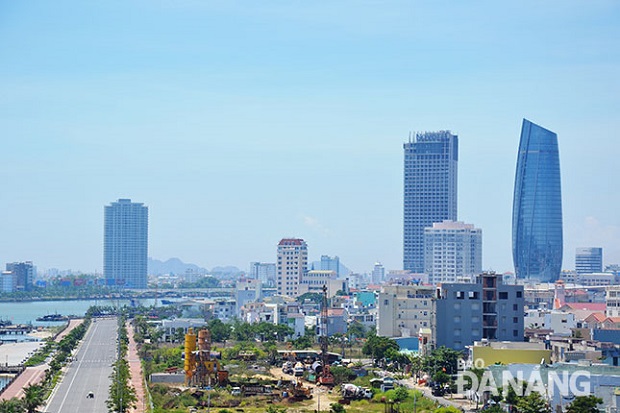Hallmark events and remarkable achievements in urban planning
Since its liberation on 29 March 1975, especially its recognition as a centrally-governed city on 1 January 1997, Da Nang has seen remarkable changes in its socio-economic development.
 |
| An overview of the city from the above |
The city is one of the top 10 best places in the world for foreigners to live in 2018, according to the international tourism magazine Live and Invest Overseas (LIO).
The Nai Hien and Nam Tho fishing villages on the east bank of the Han River in the past looked sleazy with many stilt houses but they are now replaced by numerous tourism sites and international-standard urban areas.
Over the past two decades, the city has focused on ensuring the compensation and relocation in an effective and reasonable manner. Thanks to this, a total over 1,300 projects have been deployed effectively, covering an area of 17,000 ha in total.
Since Quang Nam-Da Nang Province was officially divided into the 2 administrative divisions of Quang Nam Province and Da Nang in early 1997, Da Nang has given the top priority to promoting its traffic infrastructure system.
To date, a total of around 1,900 roads have been built or upgraded, which has ensured the smooth movement of vehicles from the city centre to the rural and mountainous areas. In addition, over 98% of the city’s streets have already installed with lighting systems.
In addition, a large number of large-scale traffic projects have been deployed to reduce the overload of vehicles on the streets. Meanwhile, the airport, ports, railway and highways have already been upgraded, meeting the international standard in transportation.
The construction of the Han River Swing Bridge, which officially opened to traffic on 29 March 2000, marked an important milestone in the development of the city’s traffic infrastructure. Following the success of this bridge, other bridges have since been built across the river. Notable are the Thuan Phuoc, Tuyen Son, Rong (Dragon) and Tran Thi Ly bridges. The stunning beauty of these bridges makes the river sparkle and look very beautiful at night, which helps to attract even more visitors to the city.
Furthermore, drainage and urban wastewater treatment systems have been upgraded to ensure a healthy environment.
In particular, importance has also been attached to ensuring the effective implementation of the social welfare programmes.
The city is now home to a total of 19 general and specialised hospitals, 11 district-level healthcare centres, and 47 ward-level medical stations, together providing around 7,000 beds in total.
In addition, a total of 354 schools at all levels, and 159 libraries meeting the national standards, are operating in the locality.
Moreover, a large number of cultural works have been upgraded and constructed to enhance the quality of the spiritual lives of local residents. Included are the Museum of Da Nang, the Fine Arts Museum, the Nguyen Hien Dinh Tuong Theatre, the Labour Culture House, the Children's Cultural Palace, the Museum of Cham Sculptures, the General Science Library, the Hoa Xuan Sports Complex.
In the years ahead, Da Nang is striving to gain even more sucess in its urban planning to affirm its position as one of Viet Nam’s most modern and dynamic cities.